In partnership with Inside the Volcano

On a gray and miserable afternoon, my husband and I took a tour with Inside the Volcano, to descend 120 meters into Thrihnukagigur (‘Three Peaks Crater’), a dormant volcano that had last erupted 4,000 years ago.
We drove out of Keflavik, with our four-wheel-drive feeling like a toy car thanks to the strong gusts that rattled our windows and blew the entire way. When we arrived at the meeting point, the sky was an even grimmer shade of gray. We battled not having the car door blowback in on us as we got out and into the little cabin where we waited for our tour to begin.
Once our group of about 15 had assembled, we were off on a 45-50 minute hike to the crater, with the wind billowing persistently behind us. The landscape around us was bleak – mossy lava fields and black upon black lava rocks. While the path itself was moderately flat, the surface was slightly uneven in parts, and the wind made it that slight bit more challenging.


When we arrived at the cabin by the crater, it was time to put on our special descending-the-volcano gear – a helmet with a headlamp (we were going deep into the volcano, after all), and a trusty harness, which would be clipped onto the caged metal elevator that we would use to go up and down the volcano, as well as walk across the little bridge to get in and out.


The wind continued to blow stronger and mightier as we donned our gear – and as we made our way to the volcano mouth itself, I felt at times that I would be lifted up and blown away! But I made it to the volcano without flying off, and as our group of about seven squeezed into the elevator that seemed to barely fit into the crater, it took about six months for us to eventually get to the bottom. Along the way, we were greeted with glowing colors of red (iron), yellow (sulfur), and even blues and greens from the different minerals that had been left exposed after the volcanic eruption.




The sheer size of the volcano from inside is incredible – apparently, you can easily fit the Statue of Liberty inside it, and we were able to explore the different little paths near the base of where we descended. There was one particular area on the volcano wall that was impressive – a huge splattering of black rock surrounded by bright yellows, which almost looked like it was a big eye glaring at us below.




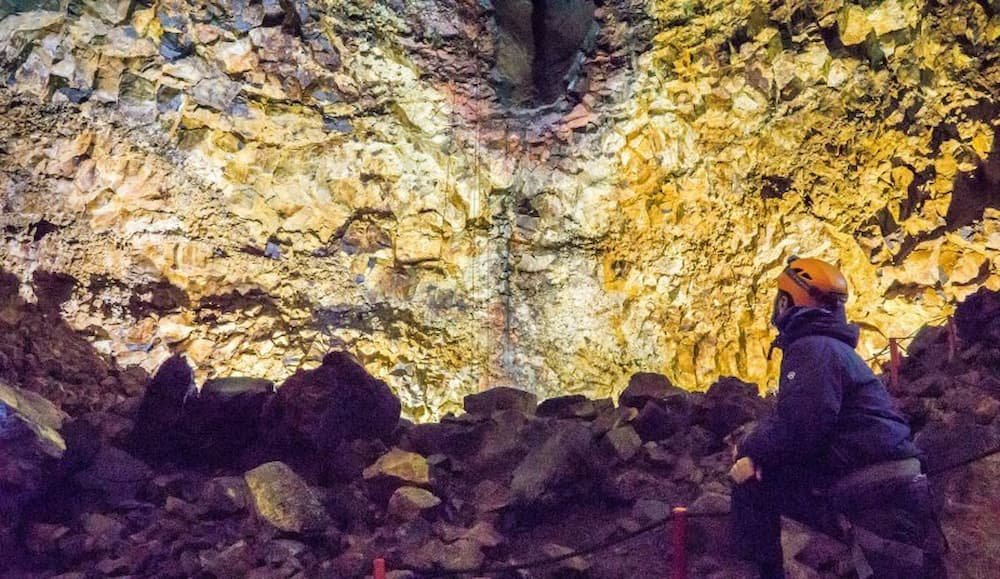
Thrihnukagigur volcano is unique because when the eruption happened, the magma in the chamber seems to have disappeared, with experts believing that the magma either solidified in the walls or retreated somehow into the depths of the earth. Tours started about 40 years ago, giving people a unique experience to go into a volcano for an extreme close-up.
After we had wandered around the volcano, we made our way back to the cabin where we were treated to traditional Icelandic meat soup, coffee, and tea. With the icy wind continuing to hammer around us, it was a very comforting treat. It was also clear as to why the volcano tours only operate until September – the weather here could obviously be treacherous and unforgiving in the colder months.

And then it was time for the hike back…. And very quickly, the weather went from crazy to insane. The skies turned vicious, and there was a ferocious downpour of sideways rain, carried by a howling wind. Then it started to hail, with the ice feeling like it was cutting tiny shards into my face. I felt drenched despite wearing multiple layers and a Gortex jacket and waterproof pants on top of my leggings and thermals.
Trudging along the path and combating the wind, we eventually made it back to the cabin where we started, where we quickly wiped our faces and ran back to our car for the 30-minute drive back to Keflavik.
While I was relieved to be out of my wet clothes, I felt thrilled by what I had just experienced. It’s a perfect summary of Iceland – enthralling, majestic and rugged all at once, and a country that makes you want to go back and relive it all again.
In partnership with Dive.is
If you’ve ever been snorkeling or scuba diving before, it’s a fun and indescribable experience. You’re aided by a snorkel or an oxygen tank to breathe while exploring what’s underwater and marveling at the life below.
For many people, snorkeling or scuba diving in Iceland is not the first thing that springs to mind – obviously, because it’s so cold. But in Iceland, you can snorkel in the only place in the world in between the North American and Eurasian continents, which drift apart about two centimeters every year.
Be brave, the water might be freezing but it’s well worth taking a snorkeling tour in Silfra, Iceland.

The Silfra fissure is the crack between these two continents, and where the water averages a chilly two to four degrees Celsius (yes, it’s pretty much freezing)! We arrived at Silfra, not far from the UNESCO World Heritage site Þingvellir, which we could see from a distance and which we had visited only a couple of days before.
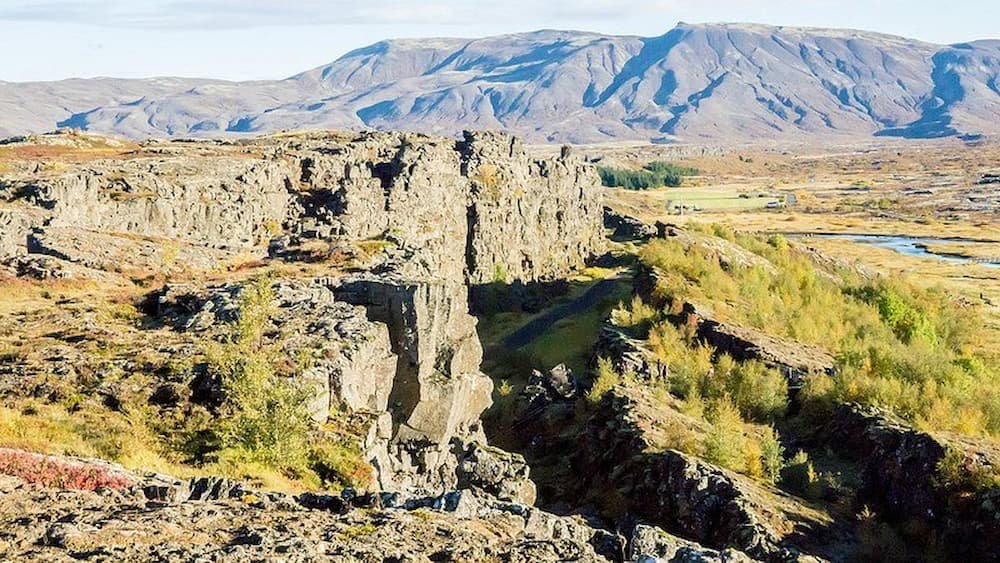
Once we arrived at Silfra, we put on a dry suit over our clothes, which was light and so comfortably insulated that we didn’t want to take them off. On top of that was our hooded wetsuit, plus our snorkel and goggles. We had two pairs of socks over our boots and flippers and waterproof gloves to top everything off. The only thing that was exposed was our faces.
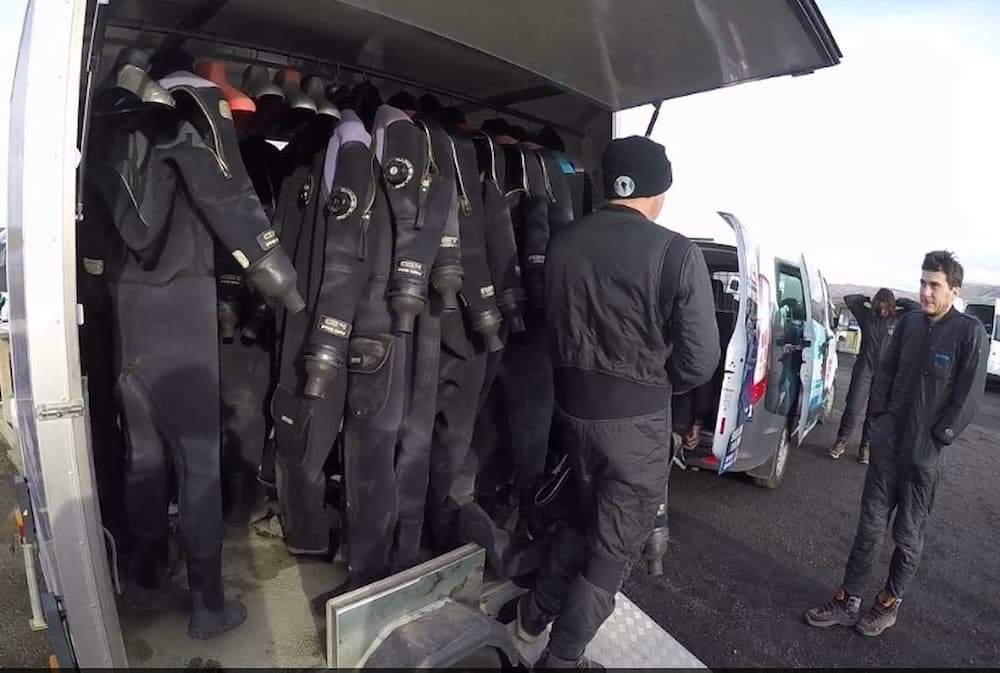

Our group of friends clambered down a few steps leading into Silfra fissure, and even though we were more than adequately insulated, as soon as my body touched the water I could feel the cold water surrounding me. Once my face was in the water I was admittedly shocked by the cold, but too exhilarated to care. Here we were, bobbing up and down in the water, seeing the colorful rocks and landscape underneath with incredible clarity – we could see 100 meters ahead. The water was so clean, that if you wanted to you could take a bit of a sip of it (I tried it – the guides even recommended we do it).

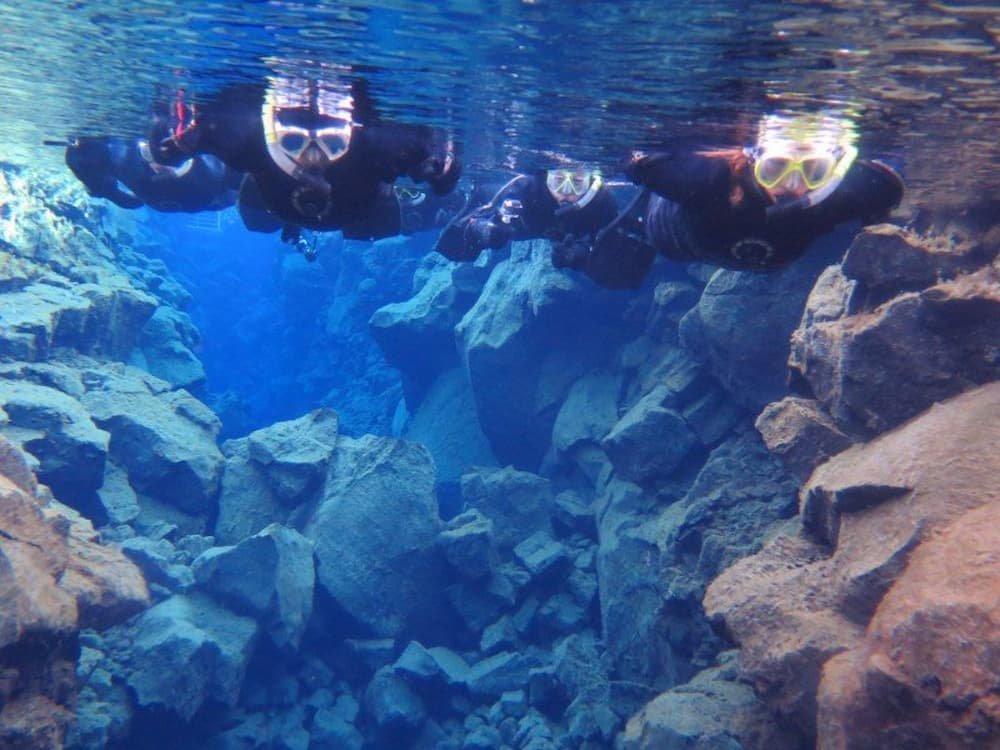
There are several sections of Silfra, with the deepest being Silfra Cathedral, which is 20 meters deep and 100 meters long. Here we saw lava rock walls dramatically sloping downwards, as well as algae. At the narrowest part of the fissure, you could practically touch the tectonic plates on either side of you. The last section is Silfra Lagoon, where the fissure widens out and we were able to freely swim around and explore.

While you don’t see any fish in Silfra, the experience itself was so unique and fun. Towards the end of the experience, I could feel my fingers chill and freeze, so I wouldn’t have stayed in much longer than the time they had given us about 30-40 minutes, which was perfect. Before you go in, the guides tell you that your fingers, while covered, will inevitably get wet, and the best way to avoid them from getting colder is not to move them much – so either swim with your hands behind your back, or outstretched in front of you (which looks kind of weird admittedly, but I did that because it was the most comfortable).

Once we got out of the water, I could tell that my face was flushed from the cold and my lips, which had been wrapped around the snorkel the entire time, felt swollen and numb. Talking felt hilarious. We walked back to the van to change out of our wetsuits (which was quite an endeavor itself) before being treated to hot chocolate and biscuits – the best way to finish up a one-of-a-kind experience.
If you would like to dive or snorkel at the Silfra fissure be sure to check out Dive.is.
Once a year, around the full moon of November, a huge camel fair takes place in Pushkar, India. When the eighth month (one of the most sacred) of the Hindu calendar has come, camel drivers of the Thar desert begin the long journey that will lead them to Pushkar for the full moon of Kartika Poornima.
Every year, some 300,000 people come here, bringing 50,000 camels and cattle. The city turns into a whirlwind of colors, sounds, and movements, where musicians, mystics, merchants, tourists, devotees, and animals come together for an amazing experience. This is the Pushkar Mela, commonly known as the Pushkar Camel Fair.

Imagine being in a vast and dusty plain, drained of energy by the sun’s rays and lack of water. The surrounding area is dotted with nomad tents. Men in white tunics sporting spectacular mustaches and elaborate turbans, with tens of thousands of camels as far as the eye can see. Yes, the Pushkar Mela is an event of pure magic.
Prepare to be transported back to the days of caravans, where people lived a nomadic life in the desert with their wives and children. Their possessions consisted only of the food they needed, tents, and their precious water supplies, moving from place to place to conduct their business.


At the Pushkar Mela, camel drivers organize themselves according to the sun. Every day passes the same as the last for the entire week-long festival.
Around 5:00 AM, the sun rises over the desert, located just outside the city, and slowly the masses awaken from the serenity of the night. Slowly, in the cool of the morning, we hear voices, whispers, and groans of those armies of cattle that had lay silent all night.
Fires appear here and there, and the plain suddenly ignites with pink and orange tones. Men are pressed in circles around campfires, wrapped in heavy blankets, sipping a chai tea or smoking a bee-dee. Meanwhile, the women prepare food in large pots on glowing fires which are fueled by cow or camel manure (it’s efficient and cheaper than wood).
Here, people prepare tea and food with water provided by wells drilled in the area and chapattis are cooked in the sand, as they do in the Sahara. The toilet is a little further, beyond the hill, or even incognito among the tents or sleeping people.

Rajasthani men usually wear a turban, a specific color that is representative of their family, tribe, or caste. They always have an imposing mustache that they are constantly looping between their fingers.
The price of a camel is around 15, 000 rupees (approx $220 USD), and may even increase to 20, 000. While this may seem cheap for such a large animal, it is exorbitant when you factor in the proportionate cost of living in India. People are willing to pay though, as these animals are essential tools for work and travel.

The chillum is a clay pipe, full of charas that the camel drivers share together in small groups. The grass is pure and super strong. Most men smoke here at sunrise, and of course again at sunset. It’s part of their desert culture. It may be interesting to make good negotiations … Who knows?
When we approached, they often invited us to sit with them for tea. They drink chai here in small bowls that they will use afterward for their food since they don’t carry glasses. And then comes the chillum…. it’s so strong that after a few drags, there’s no need to consider undertaking anything for at least an hour … you take time to land smoothly.
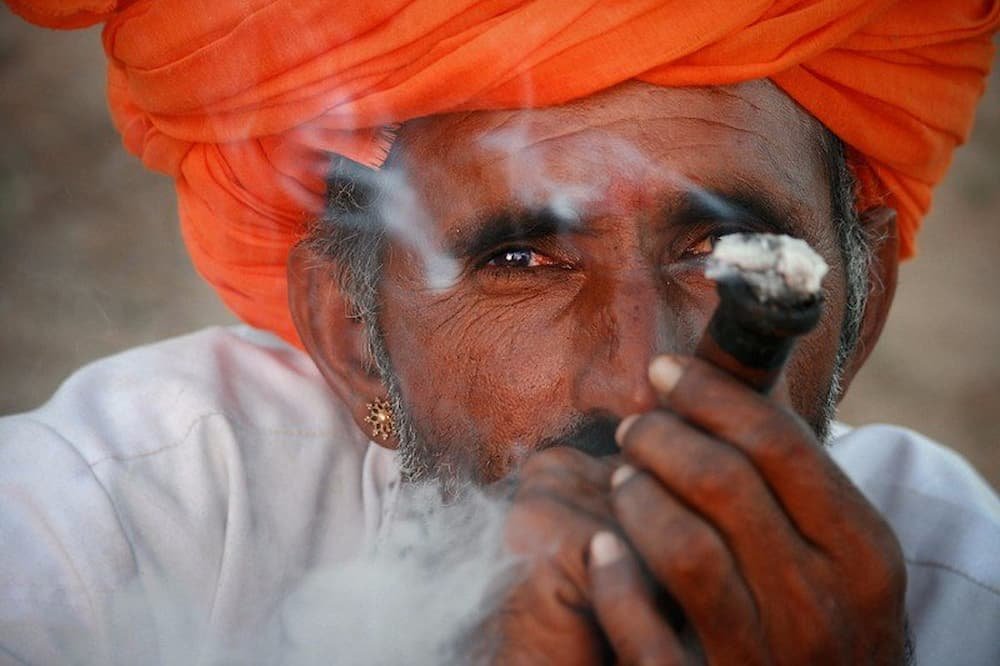
Once again it is sunset on the Mela grounds. By immersing myself in such places I feel that traveling has definitely brought me to a higher level. It opens doors that become impossible to close. They are sometimes indefinable sensations, and visions, hidden behind an opaque veil, through which we can only guess a vague outline. All these travels are like a kind of succession of baptisms that accumulate themselves over and over again. They entirely become stories of your own life, that you’ll never forget and that will continue to beat in your inner self, for the rest of your life.
These experiences become stories of your own life, that you’ll never forget and that will continue to beat in your inner self, for the rest of your life.




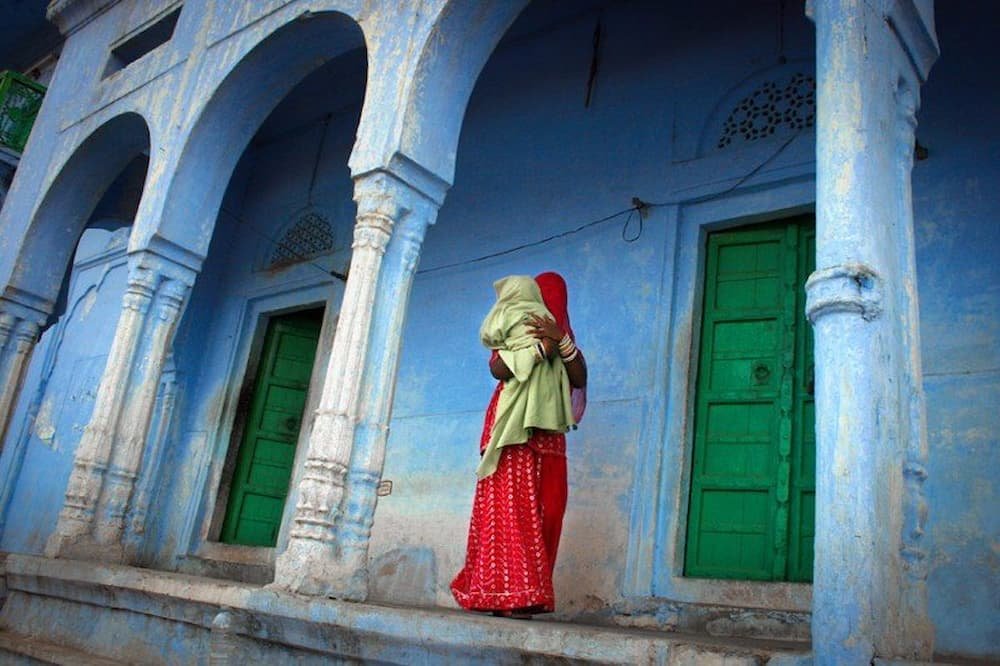


According to the system of castes, the gypsies of Rajasthan are part of a vast Indian population of “untouchables” and society expects nothing from them. These outcasts are acrobats, Kalabilia dancers, Bhopal puppeteers, snake charmers, yogis, musicians, or dancers. Their arts have always been used for the entertainment of the Maharajas.




Every hour, a new performance is given in the Pushkar stadium. People are not always aware of what will happen next since many of the shows are improvised. From afar, we only need to follow the tide of colored saris and turbans as the crowd makes their way into the arena, through clouds of dust.
There is dancing and acrobatics, stunning and impressive, often carried out by gangs of gypsies. They roam around the country, but are not well-considered and are treated poorly by many people here in India.

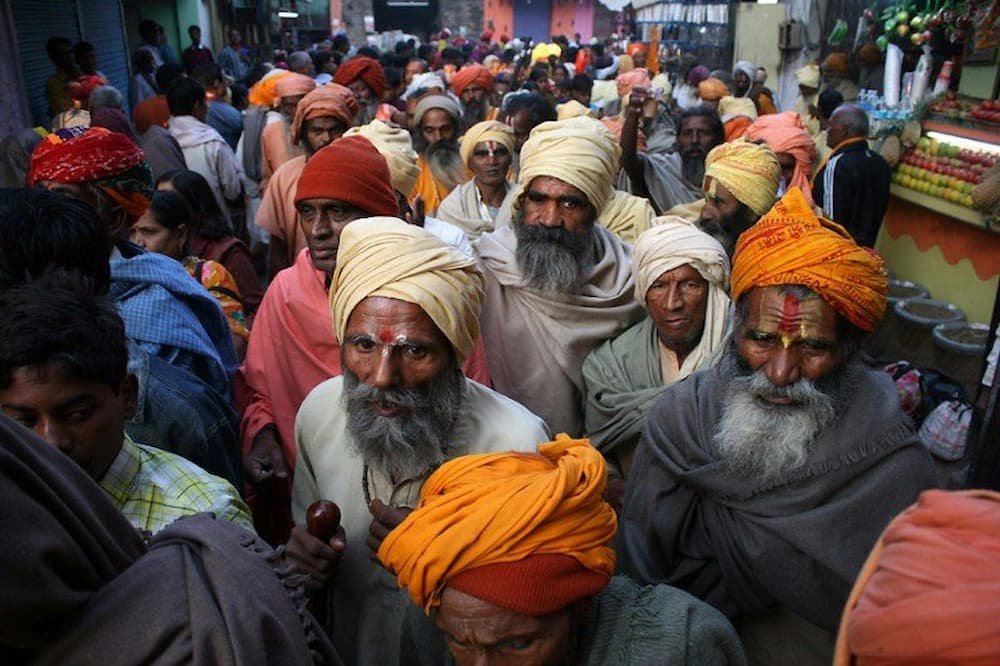

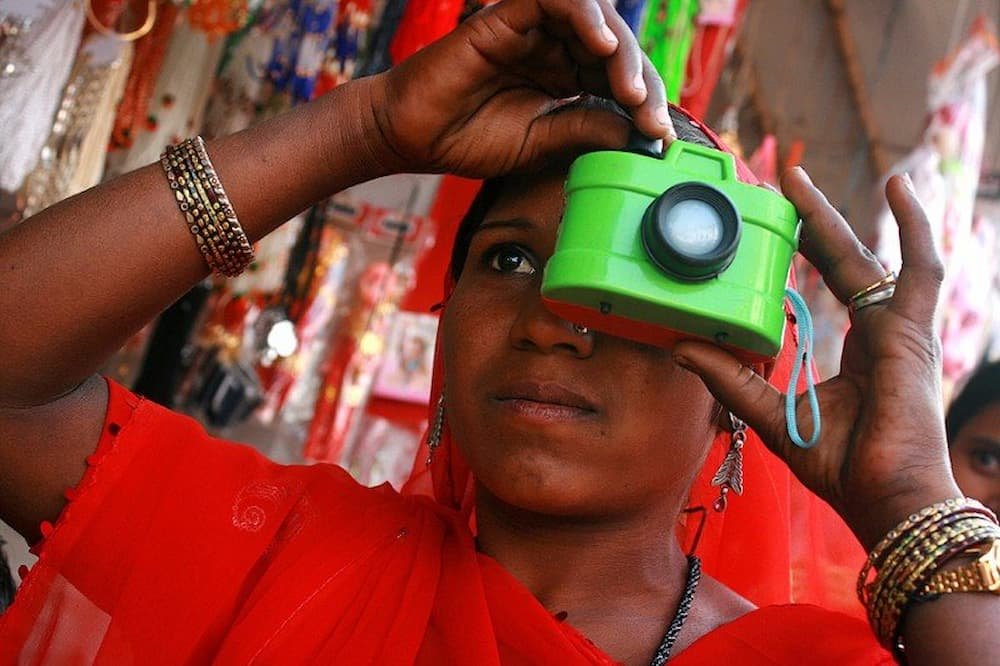
Rent a car in Jaipur for a convenient road trip to Pushkar, located about 150 kilometers away. Enjoy a smooth drive on NH48 and explore the attractions at your own pace. Moreover, having a car in Pushkar provides easy access to renowned attractions, such as the sacred Pushkar Lake and the famous Brahma Temple. For a hassle-free and enjoyable road trip from Jaipur to Pushkar, consider renting a car in Jaipur.
If you’d like to read about my journey through India or see more images from the Pushkar Mela, jump on over to my website www.parcheminsdailleurs.com.
After sleeping soundly in our warm Reykjavik apartment and a hearty breakfast consisting of Icelandic skyr, coffee, and rye bread with cream cheese, our group was excited for our “Landmannalaugar on Big Wheels” tour with Extreme Iceland.

The “big wheels” description lived up to its name – our super jeep looked like it belonged in a monster truck rally (all it needed to do was breathe fire). Clambering up to the vehicle (assisted by a little step ladder), we met our guide Ragnar (which means “warrior of the gods” in Norse), who has been a tour guide for over two decades. As the monster truck slithered through the narrow Reykjavik streets and finally left the capital, Ragnar mentioned that he owned a farm half an hour away from Reykjavik with horses and sheep and that he could be both “nasty and nice.” I felt like we were riding with a true Viking descendant.

The city landscape quickly gave way to the ruggedness of Iceland, where we were greeted with sweeping mountains and cliffs laden with black volcanic rocks with sheep and horses roaming around. We passed a geothermal plant shooting sulfur into the air, looking very much like it was producing the clouds in the sky (“the cloud factory”, Ragnar joked), and dozens of hot springs embedded into the hills (there are about 600 hot springs around the country). We drove past greenhouses that produce a lot of exotic fruit and vegetables – including bananas (apparently Iceland is the third biggest producer in Europe – and I checked because I found it so hard to believe – this urban myth is false).
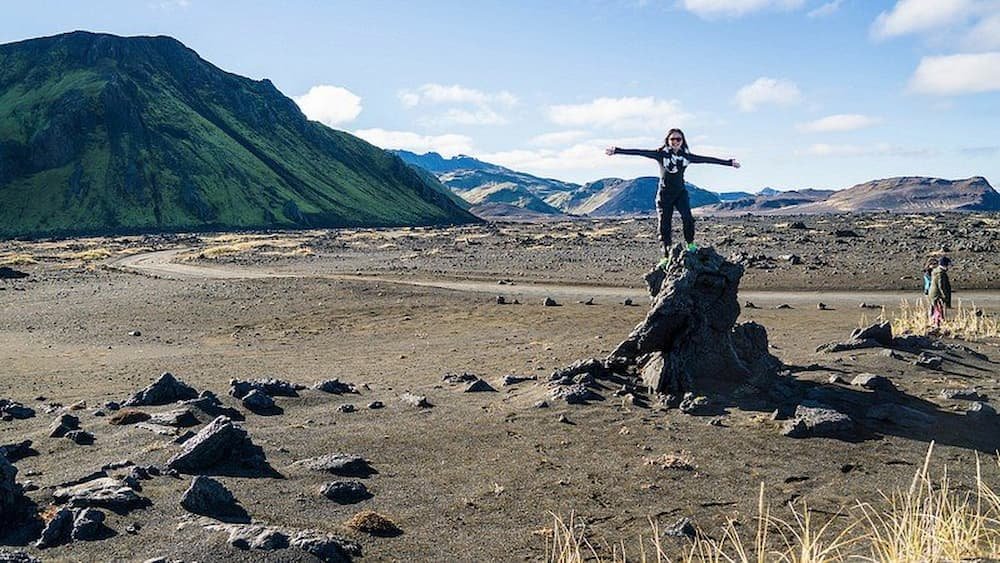
Our first stop was Þjórsárdalur Valley, home to the Hjálparfoss waterfall, meaning the Helping Falls. This name comes from when travelers arrived at this lush area and their horses could graze and recover. The waterfall has a very convenient wooden platform in front of it to check out the waterfall head-on, and is flanked by rocky but relatively easy paths to get views from different angles. It’s a very picturesque waterfall, with a parallel pair of waterfalls falling into the valley below.

Next, we headed towards the highlands, stopping briefly at Crater Lake Ljótipollur, formed in 1477 and now filled with a cobalt-blue deep lake. It literally means “ugly pond” but is far from it – even standing from a great height looking below, we were impressed with how vividly blue the lake gleamed back at us. We also stopped at Lake Frostastaðavatn, before we reached our main destination.

Lava rock is very porous and makes a great natural filter for glacial water, and we could see the difference most vividly on the drive towards Landmannalaugar, with brown water being “unfiltered” from a volcano, while the crystal blue water sidling up next to it being fit to drink. Driving past the jet black rock, it’s easy to see why NASA has used Iceland to train its astronauts – it’s an otherworldly landscape that looks like it is more appropriate for Mars than planet Earth.

We arrive at Landmannalaugar, a region forged by different and compelling geological elements, such as extensive lava fields and multi-colored rhyolite mountains. We go on a short hike and once we’re high enough, see a breathtaking display of the mountains splashed with bright hues of yellow, brown, black, and even pink and blue.
The Icelandic highlands really live up to the hype and you will most definitely want to include a trip here. Accessibility is a bit of an issue at times and the weather can change without notice so a tour is the easiest option. This was one of the main reasons we decided to go with Extreme Iceland.


Before we leave, we walked across a jetty to the site of an outdoor hot spring, where we stripped on the wooden platform to our swimming costumes, and plunged into the bath to warm our quickly shivering bodies. The hot spring’s temperature is inconsistent in places – near the source of the spring it can be boiling hot, but move an inch or two in the opposite direction and you can feel cooler water, which probably seems chillier than it is given the cool air around you while you’re sitting still in your bathing costume.

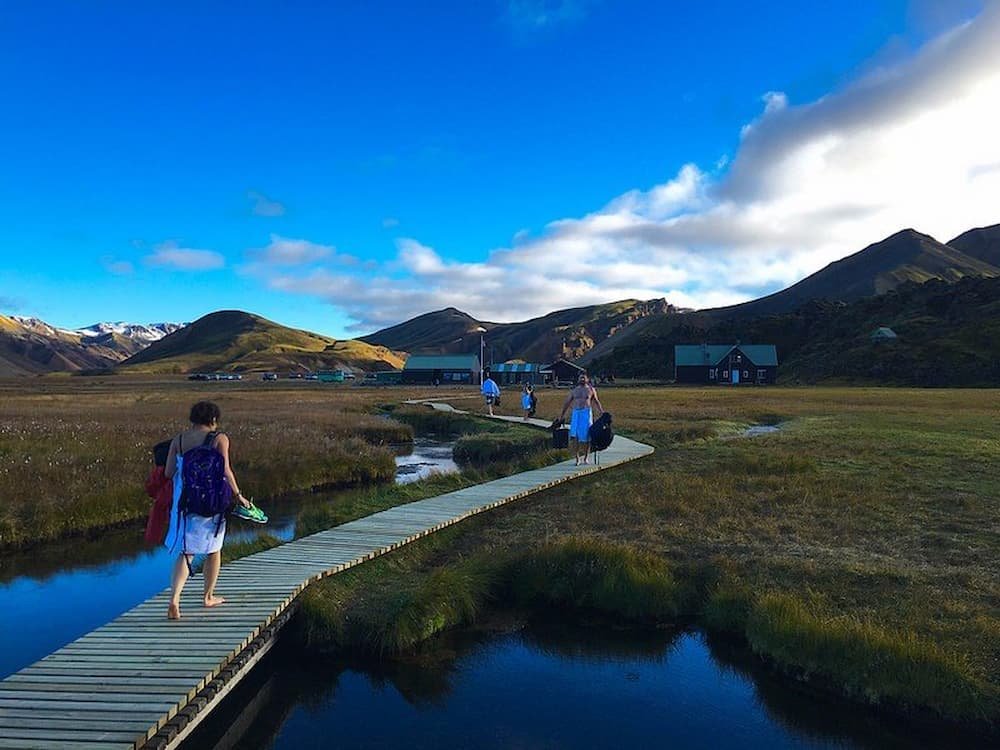
Once we were all in our monster truck ready to get back to Reykjavik, our guide Ragnar lived up to his warrior name by excitedly demonstrating what our vehicle was capable of. The road back, which was pockmarked with deep-set potholes filled with water, was the perfect opportunity for Ragnar to plunge the super jeep into every pool, splattering it with so much muddy water that we couldn’t see through the front windshield. We bumped and splashed along this road, screeching and laughing, feeling like we were on a rollercoaster ride.

Unfortunately, this wasn’t a thrill for everyone. We wound up encountering a couple who had driven their four-wheel-drive rental into a deep creek and had gotten the wheels stuck on the soft sandy ground underneath. Ragnar, ever the Viking, pulled out a rope from the boot of the car and stripped to his shorts to try and use the super jeep to rescue them. Meanwhile, we stood around shivering in the cooler air as the sun quickly started to set. Unfortunately, with nothing to tie the thick rope around, the four-wheel-drive proved to stay stuck, and the couple had to wait for help to arrive, adding to the already four or so hours that they’d been sitting in the creek.

The sunset was a beautiful mirage of pinks, purples, oranges, and blues, eventually descending us into darkness as we made our way back to the capital. But our adventure wasn’t over. As the sky turned pitch black, the Northern Lights emerged, with greens, whites, and purples vividly mingling and dancing together. A perfect conclusion to a day’s adventure.


Do you love travel photography? Have you ever felt that some places are so magical that it appears like a déjà vu? When you are there, you feel some sort of attraction that you just want to capture that moment in your mind! And it keeps replaying in your mind for the rest of your life. It could be the beauty, the serenity, or the adventure quotient that makes it a bewitching location for you.
Amazingly, India is rich in enchanting and mesmerizing locations that every travel lover would cherish for their entire lifetime. Here goes the list of top destinations that will bewitch you and your camera.

Patan is an ancient town in Gujarat built in 745 AD filled with amazing architecture, rich sculptures, and secret hideouts. Standing as a monument to a different era, a visit to Patan will leave you awestruck, especially with Rani ki Vav, Sahastralinga Talav and Khan Sarovar. The stepwell called Rani ki Vav, is a sumptuous structure with a secret tunnel that leads to Sidhpur town.

Spiti Valley, located in Himachal Pradesh, is a desert mountain valley situated between Tibet and India. A 412 km adventurous journey from Simla will take you to the Spiti Valley – a place that amazes you with its serenity. A visit to ancient Ki Monastery and Tabo Monastery (one of the oldest Buddhist Monasteries, and the Dalai Lama’s favorite), will open up a whole new world of Buddhist culture to you.

Ladakh is a breathtakingly beautiful “land of high passes” located in the Himalayan region of Jammu and Kashmir. Ladakh’s valleys, like the enchanting Balistan Valley and the remote Zanskar Valley, will invoke the spirits in you.
The unexplored mountain beauty along with the culture of Ladakh will enlighten you on the enormity of the peaceful Himalayas. The city of Leh is closely related to the Tibetan culture.

Udaipur is often referred to as the ‘Venice of East’ for its astounding monuments elegantly erected over the picturesque still lakes. Udaipur Palace on the banks of Lake Pichola is one of a kind, and will never fail to mesmerize you. Be it the landscapes, lakes, historic palaces, massive forts or amazing architecture, Udaipur is a feast for the curious traveler in you!

The Golden Temple is the most sacred shrine or Gurudwara for Sikhism. Reverently, called as Sri Harmandir Sahib (or the Abode of God), is the holy place to worship God equally for people from all walks of life.
The ‘Adi Granth’ (which is the holy scripture of Sikhism) and ‘Akal Takht’ (which is the throne of timeless one) are the sanctified embodiments in this spectacular temple, built in the middle of the pristine water body in Amritsar.

Did you know that Hampi once stood atop a list of the largest and richest cities in the world?
A trip to Hampi to visit the architectural remnants from the prosperous kingdom of Vijayanagara will take you back to the golden age of the city. Undeniably, religious monuments such as the Virupaksha temple, on the banks of Tungabhadra River, can trigger the archaeologist in you.

The Taj Mahal is the epitome of love from Emperor Shah Jahan to his dear wife Mumtaz Mahal. Standing in front of this massive mausoleum, you feel wonderstruck at how great a love can be!
The intricate stone carvings, including plant motifs, calligraphy, and marble jali lattice will leave you awestruck by this architectural wonder. The precision and symmetry are hard to fathom.
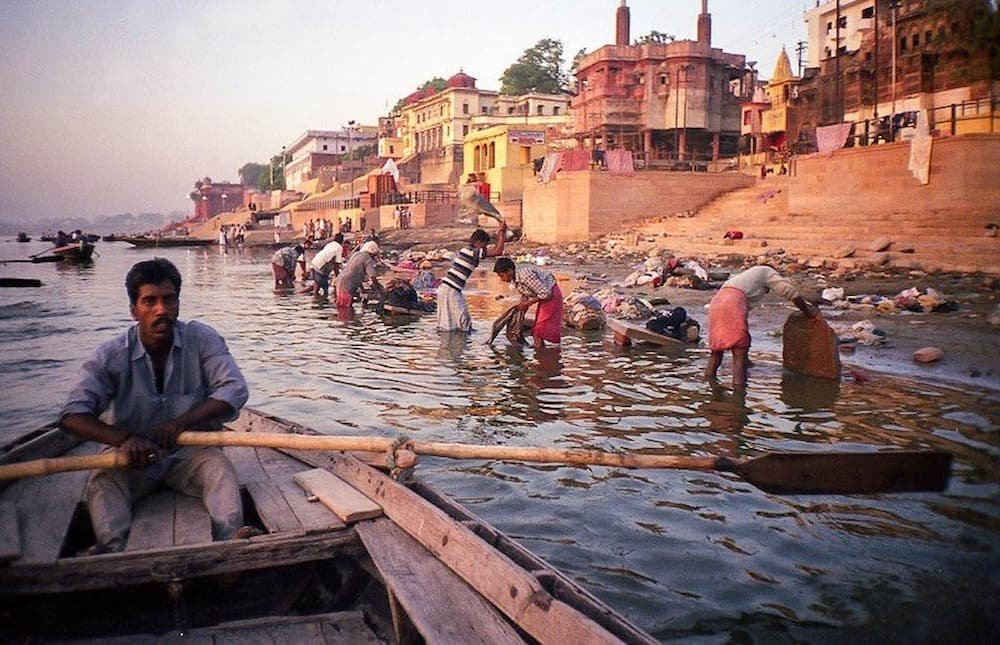
Varanasi is the spiritual capital of the Indian subcontinent. Also known as Banaras, or Kashi, commonly known for the Shiva temple, the region boasts of a rich religious history in Hinduism, Buddhism, and Sikhism.
The view from the ghats of Varanasi (embankments along the river using stone slabs as steps) is stellar and is the place for performing ritual ablutions like “Aartis”. Taking a dip in the river Ganga is considered very sacred. You can absorb the beauty of ghats of Varanasi on a morning boat ride.

Madurai is the ancient temple city, commonly referred to as the ‘Athens of the east’ for its amazing skyline, adorned by 14 vibrant colored ‘gopurams’ (gateway of the temple).
Dravidian style Meenakshi Amman Temple covered in bright carvings of Hindu gods, stands as the most amazing religious shrine from the past. Soak up the energy in Madurai by attending the Chithirai festival in April!

The Ajanta and Ellora caves are massive carved caves situated in the Aurangabad region of Maharashtra. The caves stand as a memorial to the evolution of Buddhism and Jain culture throughout the subcontinent. Beautiful sculptures, engravings, meditation rooms, and prayer halls will transport you back in time.

Akshardham Swaminarayan temple in New Delhi is an aesthetically flawless architecture that embalms the heritage of Indian culture and Hindu spirituality.
Located adjacent to the river Yamuna, the temple was built in congruence with Vastu Shastra and Pancharatra Shastra. Ornately carved pillars, statues of Sadhus, and domes covered with intricate designs of flowers, dancers, deities, and musicians; make it a prime example of temple architecture from across India.
So what are you waiting for? Pick your destination and pack your bags. By the way, don’t forget your camera to capture those spellbound moments!
After an 8-hour flight from San Francisco, we arrived at Keflavik before the crack of dawn, groggy but excited to embark on a two-week adventure around Iceland. The airport, while relatively small, shows small signs of a country that has been hit with a deluge of tourists – from the areas being constructed to accommodate more foot traffic, to the multiple billboards advertising everything from Icelandic yogurt (skyr) to the über touristic Blue Lagoon.
It’s also upon arriving that you immediately notice how expensive everything is – particularly food. Sure, airport food is always marked up but when you buy a small pastry for US$7 even that’s excessive by international standards. But of course, in a country that still continues to form through volcanic explosions, glacier avalanches, and harsh winters, it’s no wonder that consumable items don’t come cheap.

Keflavik is about one hour away from the capital, Reykjavik, and the best way to get into town is by FlyBus, a passenger coach. From the bus terminal in Reykjavik, we changed to a minibus which then dropped us off at our Airbnb around 7 am, located right in the center of the city.
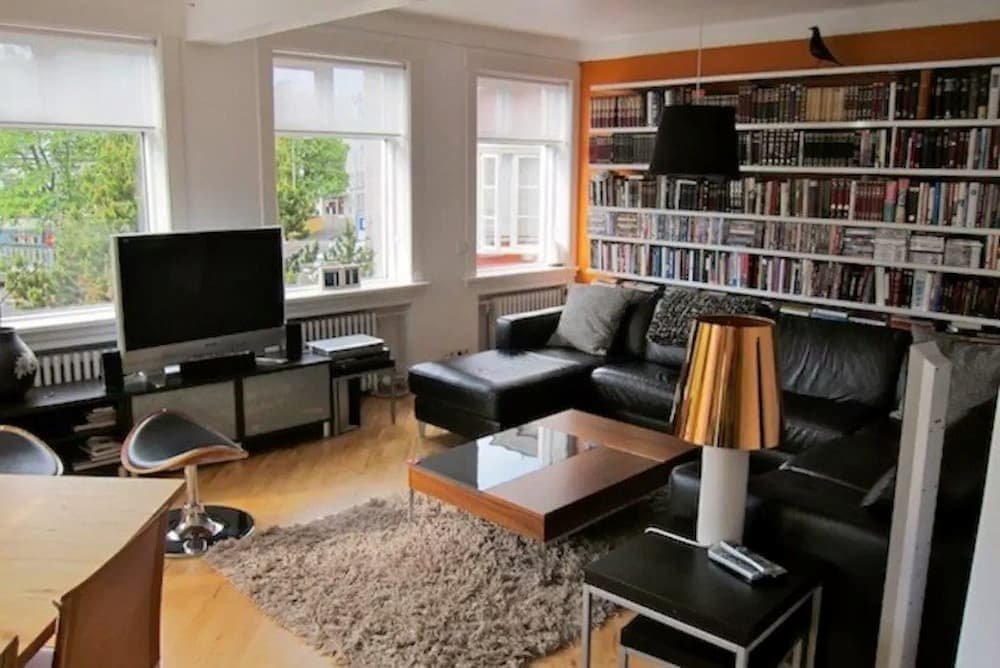
We were excited to stay in our Airbnb, our home for the next week, which we would use as the base for multiple activities and tours – including snowmobiling up the second-largest glacier in Iceland, Langjökull, to snorkeling between two tectonic plates. Iceland apparently buys the most books per capita in the world and our hosts certainly supported that statistic. Their living room had a floor-to-ceiling, wall-to-wall bookshelf stacked full of books in Icelandic and English.
The home was cozy, with well-heated rooms that meant that wearing shorts and a t-shirt indoors (despite it being a mere 2 degrees Celsius outside) was possible. People don’t sleep with a top sheet, so each bed had a duvet on it for every person (Icelandic couples don’t share), which proved to be incredibly hot the more you settled into it. We woke up in a pool of sweat the first night, not realizing how warm the covers become. It was like they were made out of some magical material that absorbs your body heat to stay warm as long as you sleep.
With so many waterfalls and glaciers throughout the country, Icelandic tap water is the purest in the world to drink – so do visit Iceland with an empty water bottle so you can fill it up virtually anywhere. Hot water is powered by geothermal hot springs, which have the intense scent of sulfur (not harmful) – so be prepared to smell rotten eggs while you shower!
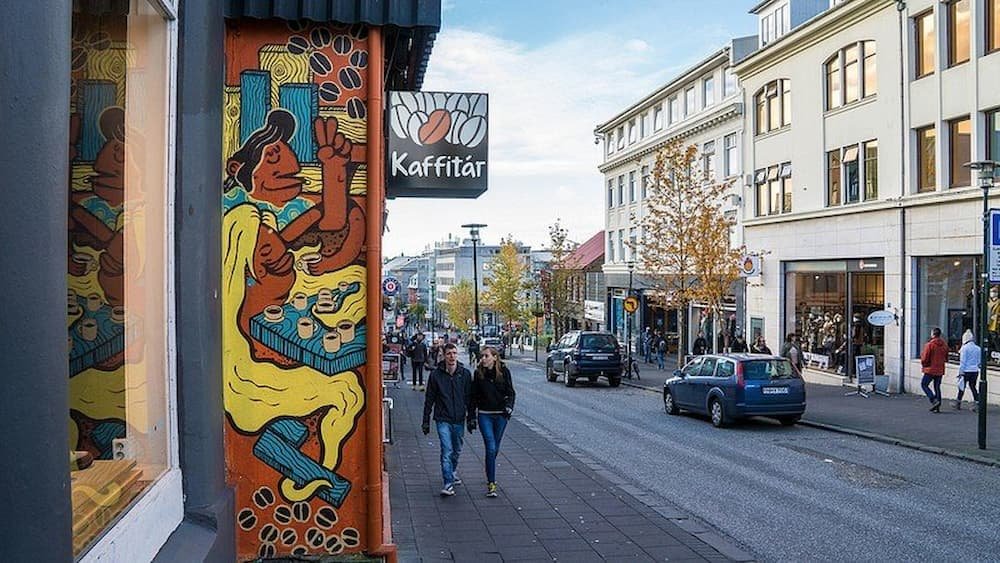

Two-thirds of Iceland’s population (about 200,000 people) live in Reykjavik, and the city is very easy to explore on foot. The streets are flanked by stores targeting the omnipresent tourist – from the shops advertising Icelandic wool sweaters to English, Irish and American-style pubs and bars serving everything from fish and chips to hamburgers. We stopped at a café for lunch and were treated to an expensive (but delicious) BLT sandwich and coffees (including a
We stopped at a café for lunch and were treated to an expensive (but delicious) BLT sandwich and coffees (including a licorice-flavored brew – if you’re a licorice fan you’ll love it here, they seem to put it in everything from ice cream, chocolate, and even popcorn)!
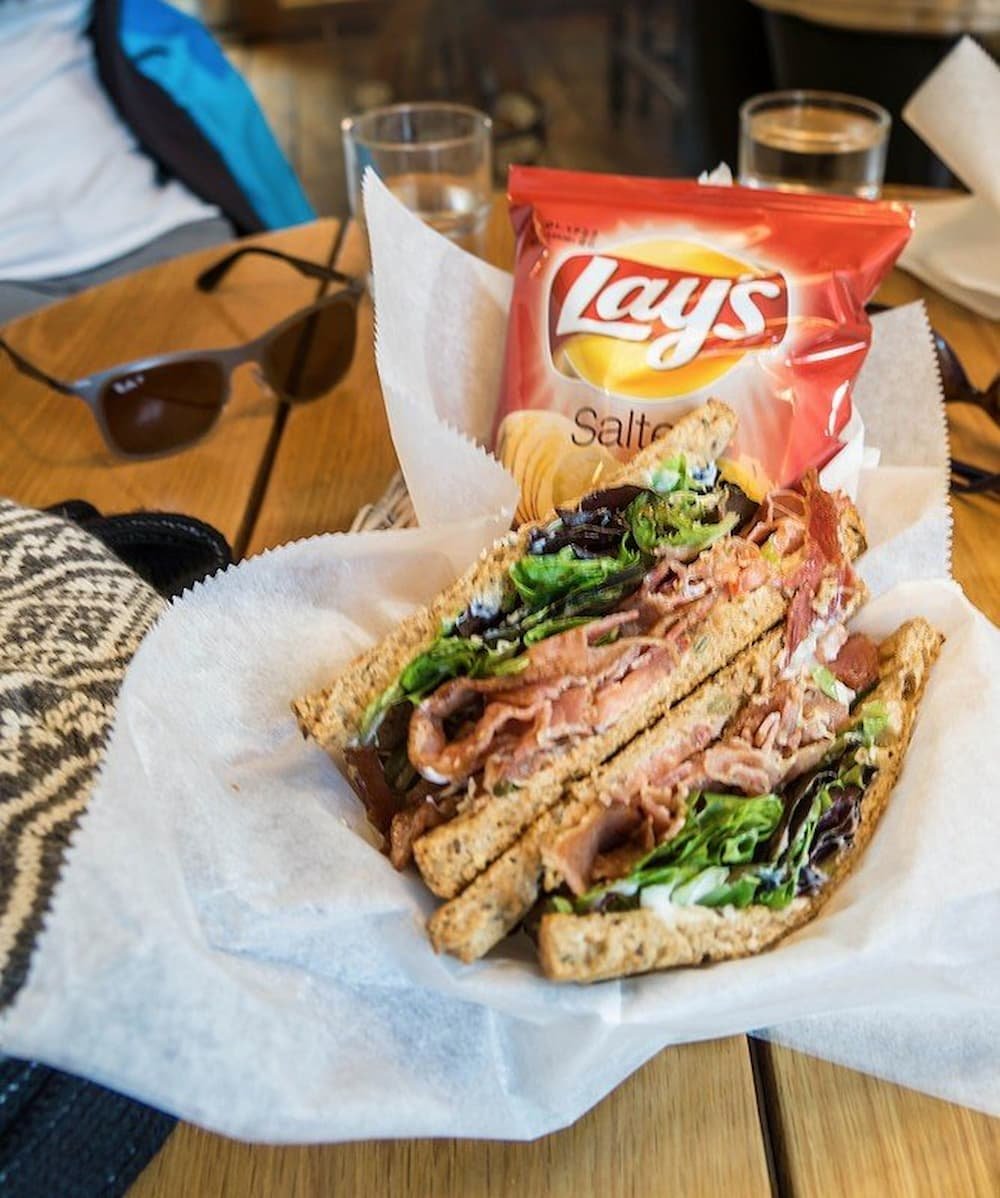
The city is very artsy – there are countless murals around the city, and street art is rife. The houses have a European flair to them, with colorful houses popping out even against the bright blue sky (we were lucky with the weather, I imagine the colors are essential during the grey and long winters).
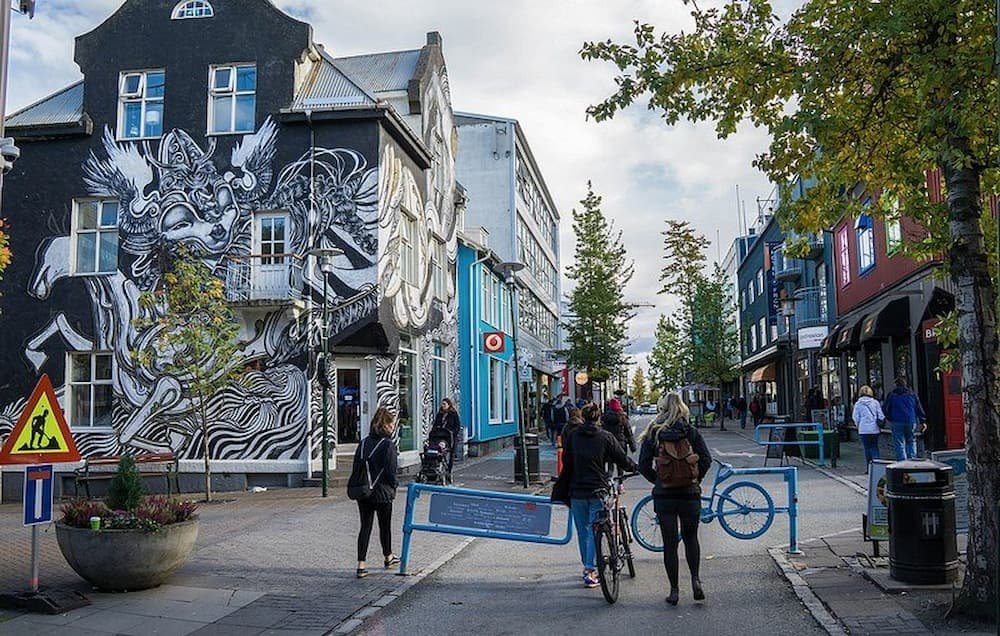
We checked out Hallgrimskirkja – the tallest church in Iceland and flanked by an imposing Viking statue. The interior has a minimal design like most Lutheran churches and also houses an impressive organ with 5,275 pipes that are 10 meters long. You can also take an elevator ride up to the top of the church to see breathtaking, 360-degree views of the city – including geysers in the distance puffing up wisps of hot air into the sky.
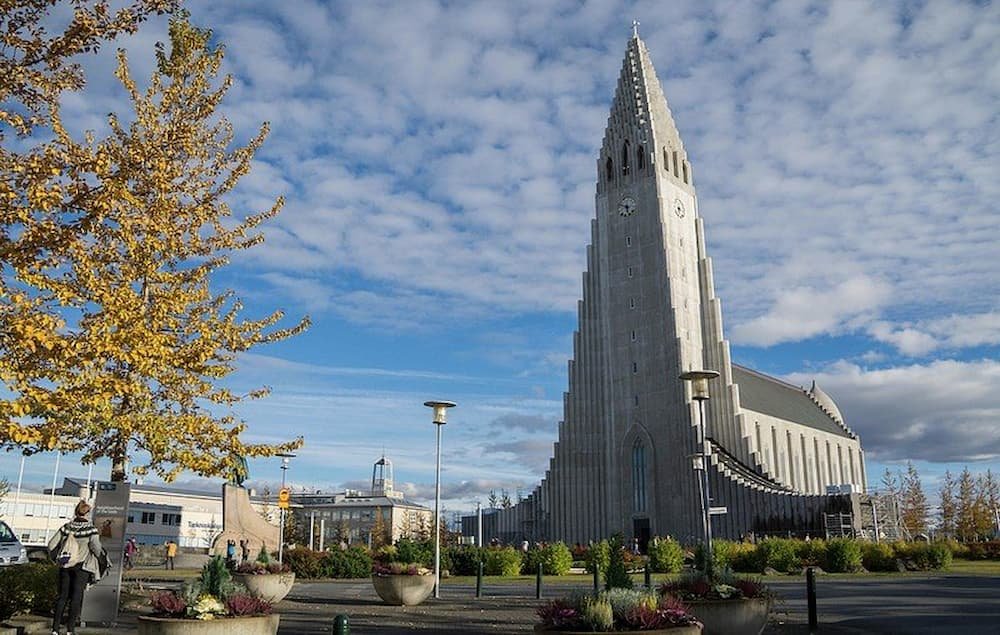

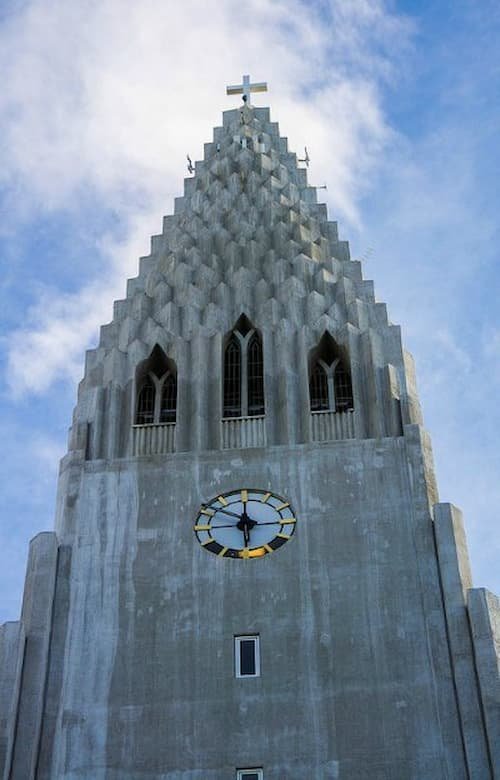
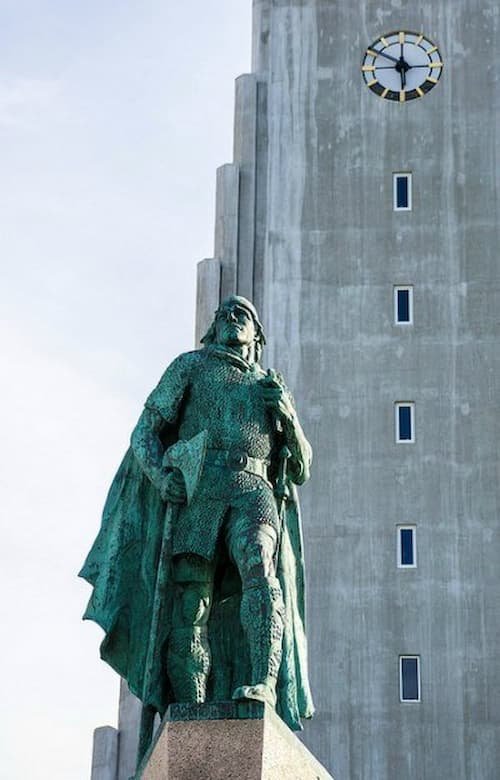
Along the water’s edge, we found Harpa, a beautiful building that shimmers with its fish-scale shaped glass windows. Construction was paused during the height of the 2008 financial crash, but the Icelandic government decided to complete it and it’s now home to various operas, conferences, and musical performances. You can enter the building for free, sit on one of the cushy seats inside and see the city sparkle from within. Walking further along the water, you’ll also find Solfár, a striking sculpture of a Viking ship that glimmers by the water’s edge.
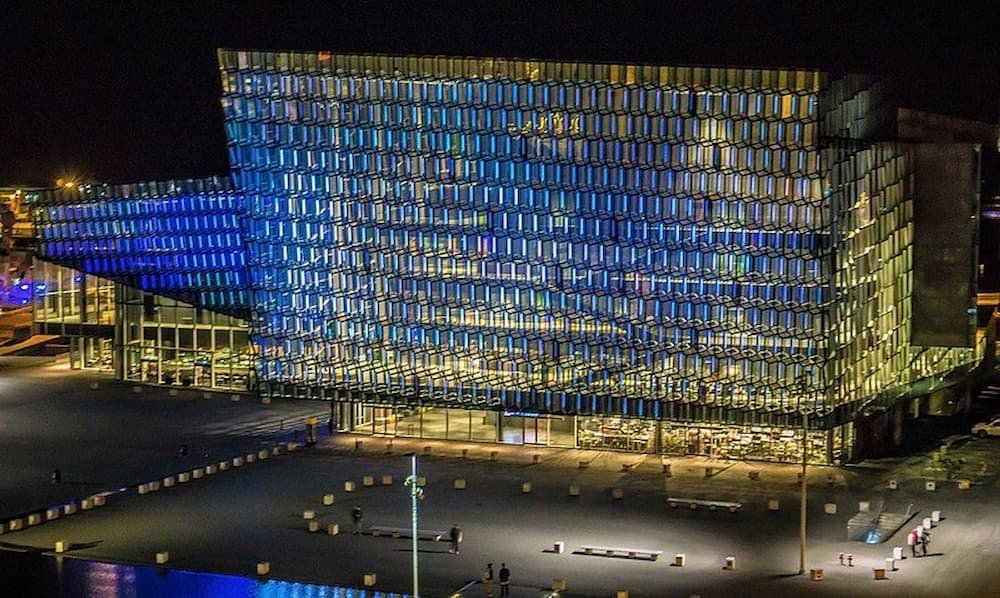
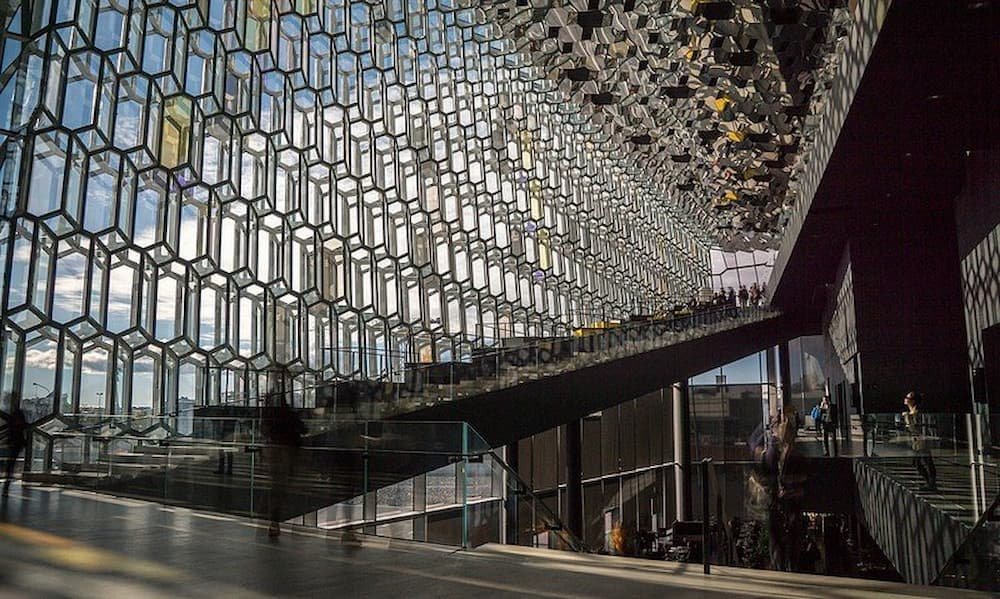
On the weekends, there’s a flea market a few blocks away from Harpa, where you can sample Icelandic delicacies. We tried more licorice and pastries, as well as Hákarl – Greenland shark. Not for the faint-hearted, the shark needs to be fermented for six months underground to be edible – and still has the strong smell of ammonia as you put it to your lips. It has a rubbery texture to boot – no wonder you need a shot of Brennivín (traditional Icelandic schnapps made from corn and accented by caraway seeds) after eating it! Besides shark, you can also purchase other meats, such as lamb, horse, whale, and salmon.
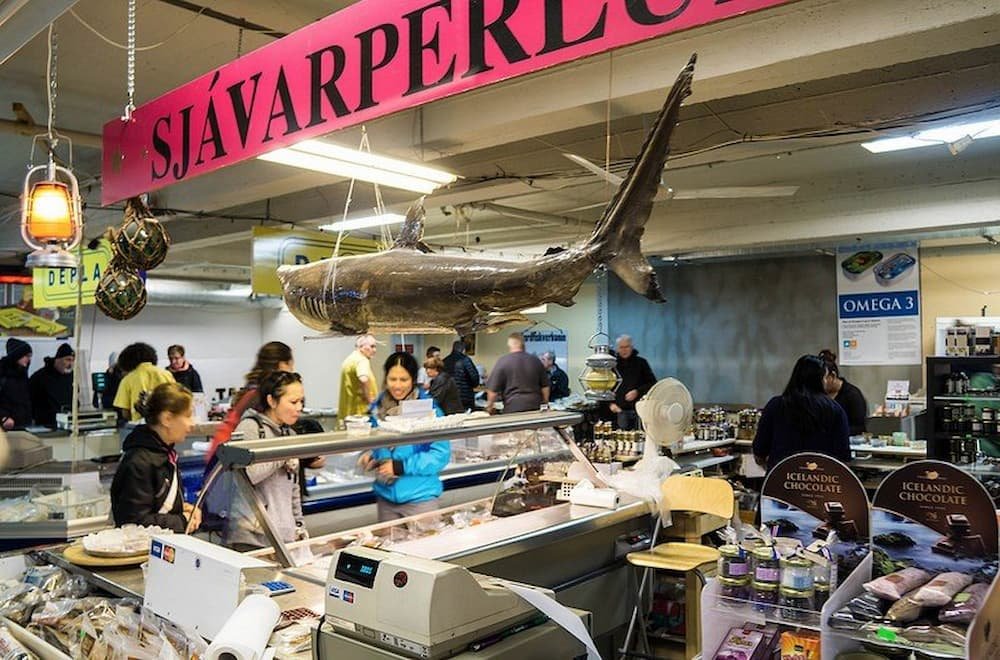
While food is expensive (even the 7/11 convenience store variety), if you’re a foodie it’s worth splurging one night at a restaurant such as Grillmarkaðurinn, particularly if you have a lot of people. We dined on incredibly tender lamb shanks, gorged on herb-encrusted gourmet potatoes and indulged in a decadent dessert that included ball-shaped chocolate that melted once the caramel sauce was poured over it. Make sure to also try a hot dog – they’re apparently “world-famous” and are lamb-based, with a mixture of pork lamb and beef, with toppings including onions, fried onions, ketchup, mustard, and remoulade, a sauce made with mayo, capers, mustard, and herbs.
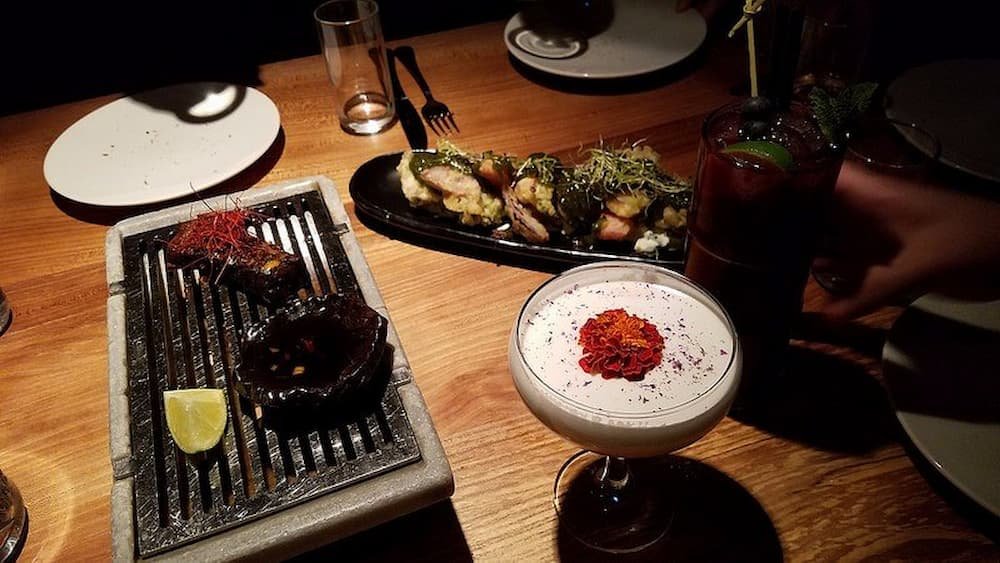
For the museum buffs, Iceland caters to all interests – from the historical and cultural Húsavík Whale Museum (Húsavík) to the niche Industrial Museum (Akureyri) to the downright quirky Phallological Museum (Reykjavik). We checked out the Reykjavík 871±2 , a Settlement Exhibition, which is atop Viking ruins, that goes into great detail on Viking life when they first settled in Iceland.
We were fortunate to be in Iceland during the start of prime viewing season for the Aurora Borealis, commonly referred to as the Northern Lights. Around 10 pm on three several nights, we saw the northern lights dancing around the city, shimmering with shades of green and white, and underlined with tones of purple at times. Reykjavik even imposed a city-wide lights out night from 10-12pm one night, so that people could enjoy the northern lights without any artificial light pollution. That night, the lights flickered on and off at different intervals, while we waited under the cold night sky, marveling at how fortunate we were to see such a natural phenomenon but also at how small we are in the universe.


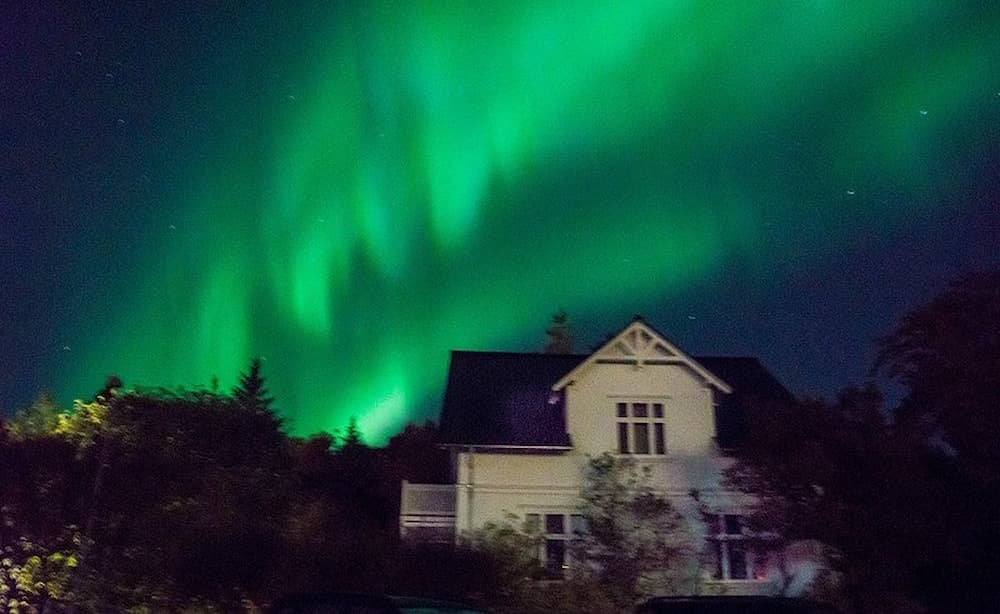
That rush of excitement and the pleasure you get when you’re in an entirely different place is without equal. There is nothing more gratifying than exploring the wonders of a place you’ve never been before.
Palawan would have to be one of those few places in the world you’ll never get tired of visiting. One visit is not enough to unravel the beauty that this island holds, and every time you set foot on this island paradise, it will always leave you in awe like the first time.
Pristine beaches, vast sand expanses, glistening turquoise waters, and a long list of unspoiled natural wonders are reasons why this island in the Philippines bears international recognition. The allure of Palawan is not only for local tourists but foreign travelers as well.
Though the number of attractions in Palawan is staggering, we’ve rounded up the 11 best spots in – El Nido, Palawan.

It’s quite relaxing, having a place all to yourself. Palawan is blessed with so many bodies of water, and the Big Lagoon would have to be one of the most stunning attractions on the island. The location is simply magical with its blue-green waters and towering limestone walls that stand as barriers to a more private experience. With its unique location, Big Lagoon is a must-visit destination in Palawan.

With the multitude of pristine beaches on the island, Nacpan Beach is one of the well-loved beaches on the entire island. This beach has long, wide shorelines perfect for you can enjoy walking barefoot on. The place is perfect for surfing, and snorkeling; almost every water activity is noted down on your list. The serene atmosphere makes relaxing by the seaside an effortless undertaking.

Serenity – the word that best describes the charm that wraps up Corong Corong Beach. Tropical vacations usually call for lively beach settings and never-ending beach fun. At some point during the day, though, we all want to wind down in the quiet, and Corong Corong Beach can offer just that. The peaceful atmosphere of the shoreline makes it the perfect place to witness the blazing sun in the far distance. Sunset watching in Corong Corong Beach is one of the most stirring experiences you’ll get on the island of Palawan.

Another secluded attraction on this island is the Secret Beach on Matinloc Island, also a part of El Nido, Palawan. This piece of Paradise is concealed by massive cliffs encircling the area. The only way into the secluded beach is a narrow fissure in the cliffs. Accessing this natural wonder might be quite a challenge, but this piece of heaven behind limestone walls is worth all the effort.

Just when you thought you’ve seen enough mystical sites for the day, wait until you get a glimpse of the captivating Cathedral Cave. With its unique formation, this cave in Palawan makes you feel like you’re in a totally different world. The cave forms part of a limestone island that can only be accessed by boat. Cathedral cave has been dubbed so because its high ceiling resembles that of the stunning upper interiors of a cathedral.

Paradise beach is like a beach setting cut out from a postcard. This picture-perfect destination in Palawan is a dreamy setting of white sand, shade-giving palm trees, and the soothing blues and greens of the sparkling waters. Another staple in an El Nido, Palawan vacation, Paradise Beach is an ideal place to enjoy the underwater sceneries. The peaceful atmosphere will make you feel like spending time on your very own private beach.

A scene cut right out of the movies, Cadlao Island is a piece of paradise within a paradise. The jagged mountain walls and limestone karsts surrounding the island adds to the feeling of a faraway tropical haven. The white sands and clear turquoise waters add up to the captivating beauty that the island already holds. Being the largest island in El Nido, Cadlao provides one of the best seaside views in Palawan.

If there’s one thing seasides are known for, it’s the soothing sunset-watching sessions. Nothing beats the experience of witnessing the glow of the high heavens while basking in the wide-open shores in the cool salty breeze. In Las Cabanas Beach, you can have an outstanding view of the blazing star by the coast. The stillness of the place provides an even more relaxing experience in this natural art show.

Papaya Beach is a gem on the beachfront. It is one of El Nido, Palawan’s best beach spots where it bestows the grandest views of the island. Not only is it the perfect location to enjoy the island’s natural vistas, but it is also the ideal spot to have some fun in its vast sandy expanse. The fine powdery white sand and the lush greens of the rainforest give you a faultless beachside experience.

What’s not to like about this socially magnificent beach escape? Not only does it hold the luxury trappings of a relaxing beach setting, but it is also an ideal place for basking in the sun. The long and wide bed of fine white sands hemmed in by blue-green waters sets a perfect venue for beachside gatherings and feasts. The place not only accords a sensational view but an engaging coastline experience as well.

El Nido’s highest peak is a fortress of natural elegance. The quest of successfully scaling the ragged summit offers one of the most exhilarating island experiences. Taraw Peak also hands over one of the most breathtaking seaside views there is. Aerial shots are heavenly on their own but it gets even more enchanting when it grants you an exceptional panorama. Being on top of the highest peak in El Nido is nothing short of capturing a flawless seaside view of this active town.
While flights do go from Manila to El Nido, few airlines fly the route. An easier option is probably to fly to Puerto Princesa International Airport and take a shuttle or bus to El Nido. Ferries from Coron are also an option for those uninterested in flying.
1. A sarong – While El Nido is known for its beaches, the district is actually quite conservative so you should bring something else to cover up your swimwear.
2. First aid kit and medicine – Medical facilities on El Nido are rare with essentially only one center serving the entire township. You should bring some medical supplies in case of emergencies.
3. Pesos – Withdrawal and non-cash options in El Nido are quite limited. Currency exchange shops may also charge a premium. You should get your Pesos ahead of time.
While there are long-distance buses carrying passengers into the El Nido township from nearby cities, tricycles are more commonly used within the township itself. There are piers and seaports available as well making boat trips another option.
El Nido has little phone coverage meaning visitors will have to rely on the internet and satellite phones. However, Palawan and the Philippines as a whole have issues with an insecure and unreliable WiFi connections. Visitors should either bring their own portable WiFi devices or pick up a VPN for the Philippines to encrypt and speed up existing WiFi speed.
El Nido is definitely a place full of pleasure and excitement. Your journey to this island paradise will be peppered with vistas of the natural wonders exhibited before your very eyes. With the multitude of natural attractions enclosed in this beautiful island destination, you will never run out of places to capture awesome sites.
Immerse yourself in nature without limits, with the sensational and impressive landscapes of Greenland.

I’ve always searched for wild places and a taste for adventure, and this growing urge led me to begin three expeditions to Greenland.
For a total of more than three months, I hiked, kayaked, sailed, and dogsled through the vast island. I was also able to immerse myself in the culture by living with the Inuit, who taught me how to survive the icy, unrelenting weather.
I couldn’t have imagined the wide variety of feelings I experienced during the first month spent in Greenland. I was moved by the contemplation of the wild untouched landscapes I had crossed, fascinated by the enormous icebergs, and truly inspired by this island’s people.

Imagine somewhere away from remotely tucked away from all traces of human life. Here, you can see a valley filled by a calm and a greenish-blue lake that bounces back your reflection. Bright green mountains symbolize the welcoming atmosphere of the land. Two thousand meter-high peaks fall steeply into the water as if to highlight how small we stand in comparison. Mountain passes and snowy summits relinquish melting glaciers, reminding us that nothing is eternal. Finally, there’s a bright sun to warm our hearts and a sandy white beach, where you can rest all day and contemplate the beauty of the universe.
This is quite simply the beauty of Greenland. It’s here that there seems to be an invisible force that keeps nature, and our body and soul, in equilibrium.
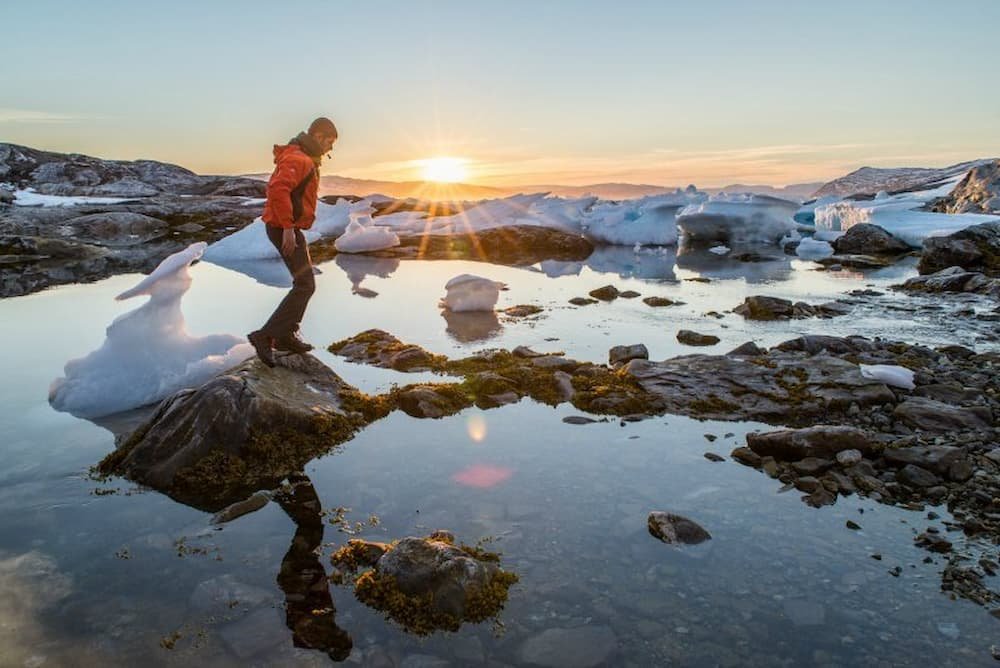

After being caught up by a storm that was 15 degrees Celsius below zero and a blizzard whipping winds of 160 km that restricted our visibility for a few days, Angani, an Inuit from Kulusuk, and I set off on a dog sled to hunt for seals, polar bears or whatever else we stumbled upon. In Greenland, hunting is not a sport but a way of life. In the Ammassalik region, the Inuit have always survived with the bare minimum amount of food, given this area is surrounded by ice for nine to ten months a year. It is one of the most remote areas in the world, which has led to the creation of a dialect called Tunumiu, different from the normal Greenlandic language.
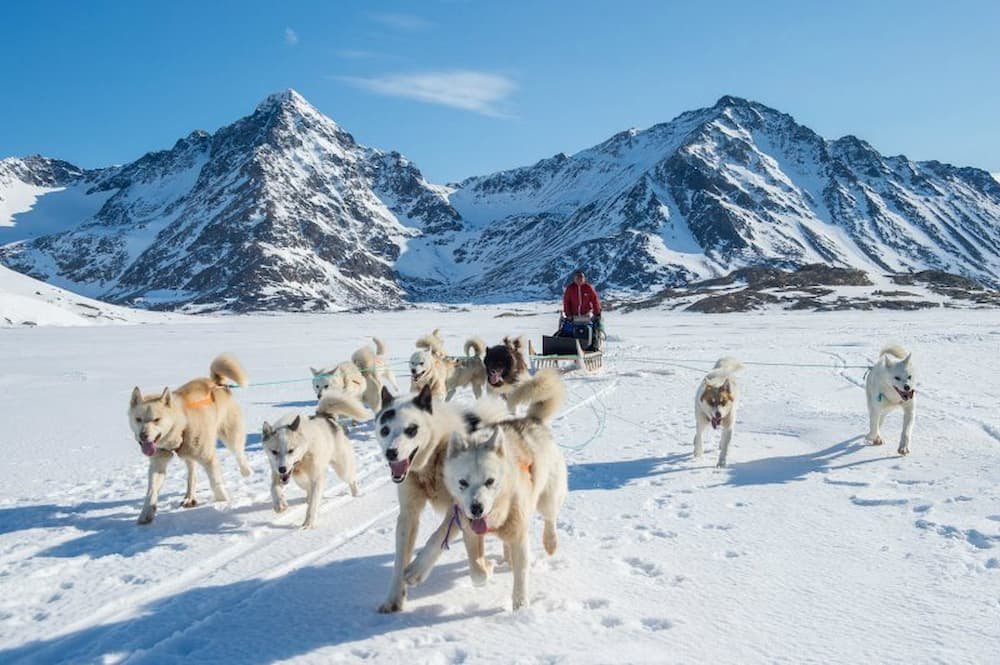
It is April, and a spring sun has already shown up. The sled glides a dozen kilometers per hour, the dogs struggling in the soft snow and melted ice due to the abnormally high temperature for this time of the year. The dogs here endure the cold, blizzards, and storms, but this weather is now almost too warm for them.
Angani screams, “Yoyo yoyo yoyo yo!”, which echoes in the air and directs the dogs to turn left. Suddenly, Angani stops the dogs, and silence lingers in the valley. The dogs sense that it’s hunting time.


Giving me a quick look through his rifle lens, Angani excitedly says, “Puisi, puisi”, which means “seal” in Greenlandic. Dressed in a white painter's suit with his gun slung over his back, he walks slowly towards the seal.
The seal, which had been sunbathing, looks up every 30 seconds to keep an eye out for predators. Every time the seal looks up, Angani stops and waits before walking toward the seal again. When Angani is close enough to shoot the seal, he lays down on the ice, holds his breath, and pulls the trigger. The seal, wrapped in a layer of blubber, is able to slide down quickly into his ice hole. Angani comes back with no prey. Hunting requires much patience. Another Inuit had spent over five days looking for a polar bear, without ever finding it. It’s like looking for a needle in a haystack.
My days are spent blowing cold embers to rekindle the fire, heating water for tea, running a photography time-lapse, collecting firewood, watching the weather, spotting the next passage of the river to cross, and finding a place for the campsite.
These simple actions take on new meaning when you live minimally, and are so close to nature. I’ve been fortunate enough to experience this on different expeditions, wandering through various countries and landscapes.

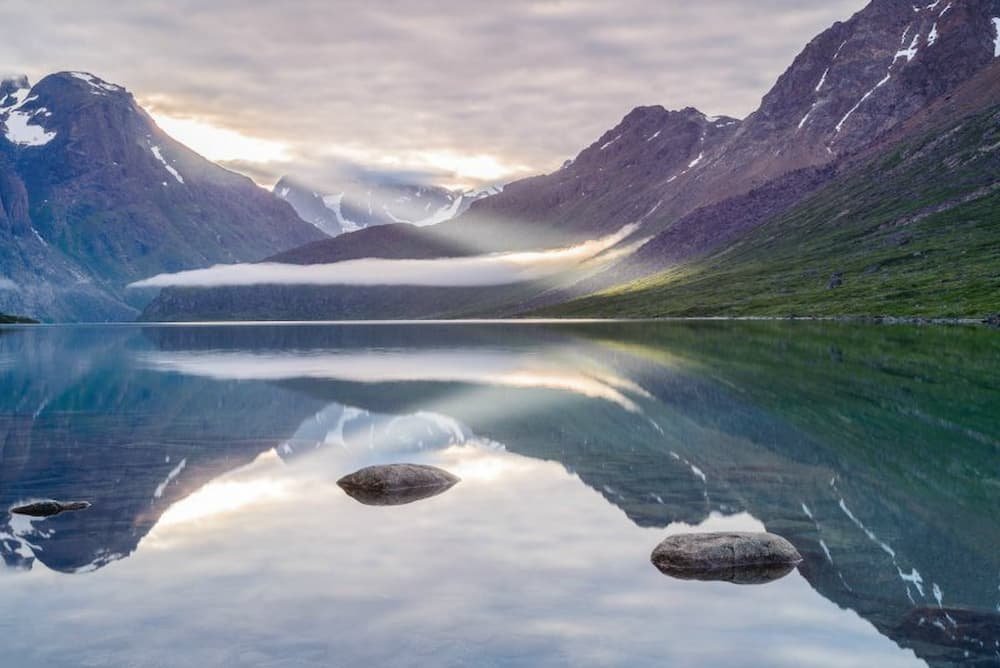
Benefiting from these experiences has allowed me to have a better understanding and appreciation of protecting the environment, and preserving age-old Arctic traditions and customs.
As I’ve gone on long hikes and reveled in the beauty of a wild place, it’s always been important to take care of the fragile and unique beauty of places like Greenland. The landscape is so unreal that pictures carry only a sliver of magic. But my hope is that they inspire others to seek out traveling to these places for their own peace and serenity.

I arrived in Greenland with a very heavy backpack, loaded with food and water. Over time our resources depleted, making our bags lighter – but now I am filled with memories and emotions from my time here.
I believe that photography can make a real connection to people, and can be used as a positive tool for understanding the challenges and opportunities of tomorrow. Photos can convey so much to a person, and now that I’m going home, I’m ready for my next adventure.








Iguazu Falls, which stretches across the border of Brazil and Argentina is one of the most impressive waterfalls in the world. Made up of about 275 waterfalls and cataracts spanning 2.7 kilometers wide, Iguazu Falls are twice as tall as Niagara Falls and on average, has 1,500 cubic meters flowing every second. It’s no wonder then that Iguazu Falls become a UNESCO World Heritage site in 1984 and was a winner of the New Seven Wonders of Nature competition in 2011.
Iguazu Falls are located within one of the few remaining inland rainforests in South America, which means that more than 2,000 plant species, about 400 bird species, 80 types of mammals, and countless insects and invertebrate species reside in the area. If you have time, check out both the Argentinian and Brazilian sides of the falls – both will provide a very unique experience.
Known as Foz do Iguaçu, the Brazilian side of the falls is a great place to start your adventure as there are fewer trails to navigate and you get a much broader idea of the scale of just how big these falls are. Make your way down to the Devil’s Throat and walk out along the boardwalk to get up close and personal.

This is at the start of the trail. Already drenched in sweat!

One of the many viewpoints along the trail where you can snap a great shot of the falls

A double-tiered section of the falls

Here you can see a major section of the falls (about 1/4 of the entire length is shown here)

Prepare to get soaked when you walk out along this boardwalk

Tourists posing for their obligatory photo

Looking out over the top of the Devil’s Throat on the Brazilian side

The viewing platform

So excited to be here

“The falls are this big”
Three-quarters of the length of Iguazu Falls are on the Argentinian side, so if you really want to experience the waterfalls and be blown away by their magnitude, spending at least a day here is a must. You can walk right into the heart of the falls, spend time walking across many trails leading to different viewpoints, and even take a boat ride that takes you right underneath the crashing waterfalls. It’s a good idea to bring a swimsuit if you plan to do this or visit in summer, as the weather is very hot and humid.

So many trails, so little time

If I jump high enough, can I be as high as a waterfall?

One of the many walking trails leading to a lookout point. It can be slippery when wet (so that means all the time)!

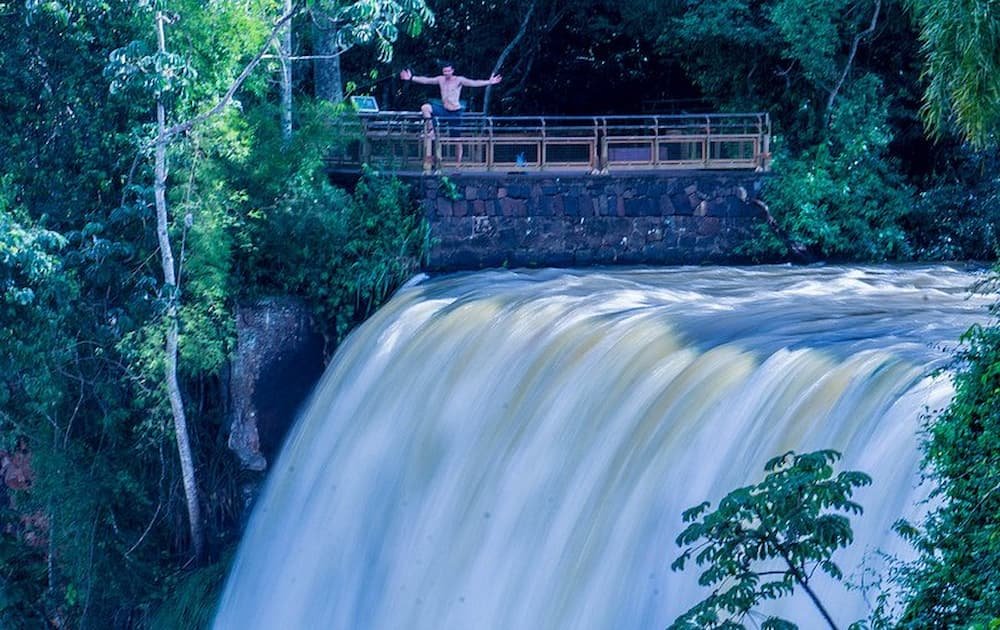

Chasing waterfalls and rainbows
One of the other major attractions during a trip to Iguazu Falls is the wildlife. There is a fun and impressive Bird Park where you can really close to and interact with over 160 species of birds, and also see butterflies and reptiles. On your way to the waterfalls, it’s also common to spot tapirs, giant anteaters, howler monkeys, ocelots, caymans, and even jaguars. One of the most common animals to see while you’re strolling along a walking trail is a coatimundi (or coati) – a relative to the raccoon. While they may look cute – and many visitors try to get up close and personal – these animals are known to be quite ferocious, so stay clear of their sharp claws!

Tortoise chilling and enjoying life

Vividly colored macaw

Impressive hairdo

I feel like this butterfly is watching me closely

Cute little lizard

These coatis look cute, but can be aggressive – don’t give them food!

Monkeying around

A very bright toucan looks just like it does in the cartoons
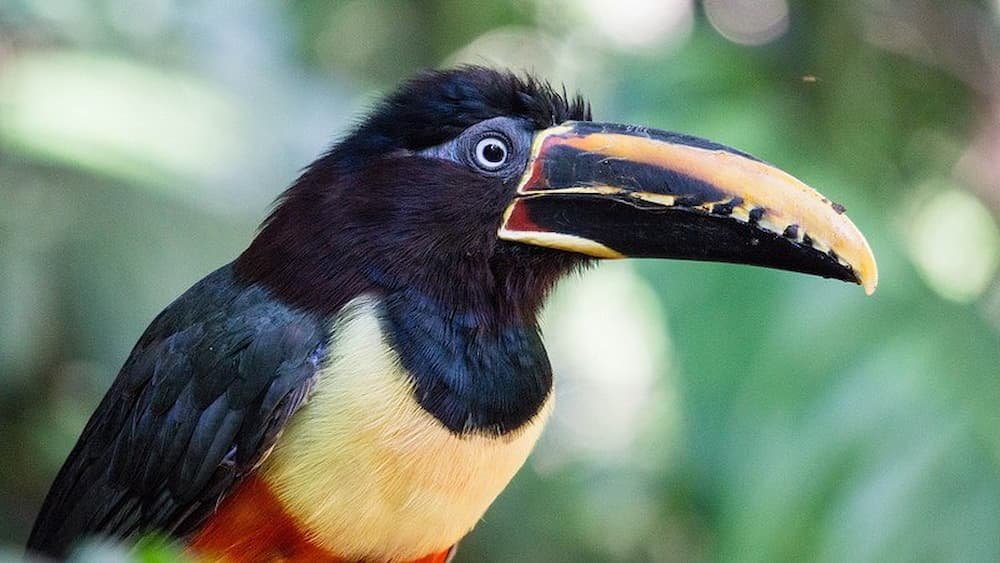

Favela. Commonly translated as “slum”, these are communities with low-income residents in Brazil. At best, favelas evoke images of colorful brick and cement houses full of vibrancy and activity; at worst, favelas can elicit ideas of substandard housing and squalor, and communities terrorized by drugs and crime.
The term favela was coined in the late 1800s after tens of thousands of veteran soldiers were transported to Rio de Janeiro following the civil war, and found themselves with no place to live. With increased urbanization taking place in Rio, today one in four people live in the 950 favelas stretched across the city. If you count the entire country, six percent of the country’s population lives in a favela.

I’d heard about favelas before coming to Rio from friends who had talked about them with hushed warning tones: “Be careful when you’re in Rio, you’ll find yourself in a nice part of town and then realize that a favela is right behind you. You’ll want to be careful.” These same friends had also mentioned that they’d taken a tour of a favela though, so I decided to make up my own mind with Favela Tour, founded by Marcelo Armstrong, who pioneered visits to favelas for tourists back in 1992, when the idea was completely unheard of.


Fluent in English, Portuguese, Spanish, French, and Italian, Marcelo worked in tourism previously, and it was upon returning to his hometown that he decided to set up the tour. Marcelo mentioned that when he started this tour, a lot of times the people in a favela were just as curious as the tourists, but today it’s only the tourists who are interested – favela residents are used to the attention. Marcelo also stressed that the favelas we would be visiting would be extremely safe, as they had not only been rid of the drug lords years ago by the police but an agreement had been reached with residents not to harm tourists – and if anything did happen, there’d be serious consequences.
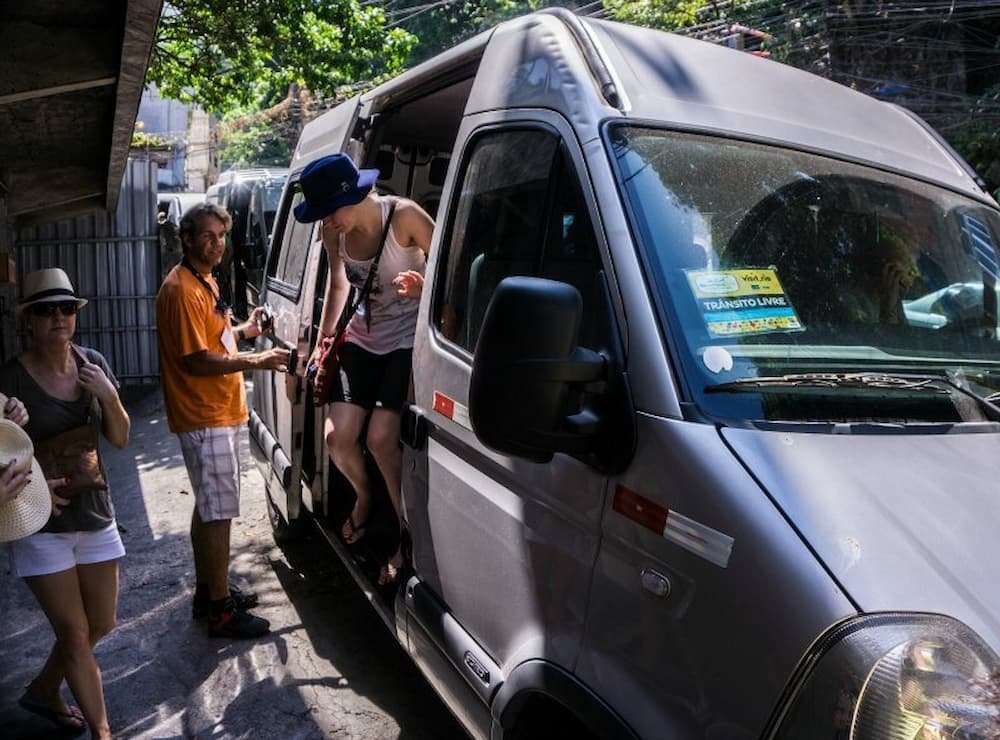
We were picked up from our hotel for a three-hour favela tour on a hot February afternoon, and whisked straight to Rocinha, the largest favela in Brazil. More than 70,000 people live in Rocinha, with unofficial estimates pegging the population at up to 180,000.
Driving into this favela, I was struck that we were in a city within a city. There were stores selling groceries, clothes, and other consumer goods, banks, pharmacies, and restaurants.
There were people peddling their art, jewelry, and handmade items for tourists interested in a bargain. There were paved roads snaking up the hill, carrying buses, motorcycles, and cars. But what was possibly most striking was the jaw-dropping view of this favela, built on a steep hillside overlooking Rio.
We were able to see the favela in its full glory on a terrace of a house, looking at all the colorful houses being built on top of each other, stretching out towards the beach.
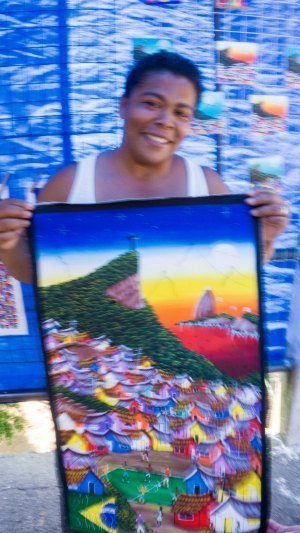

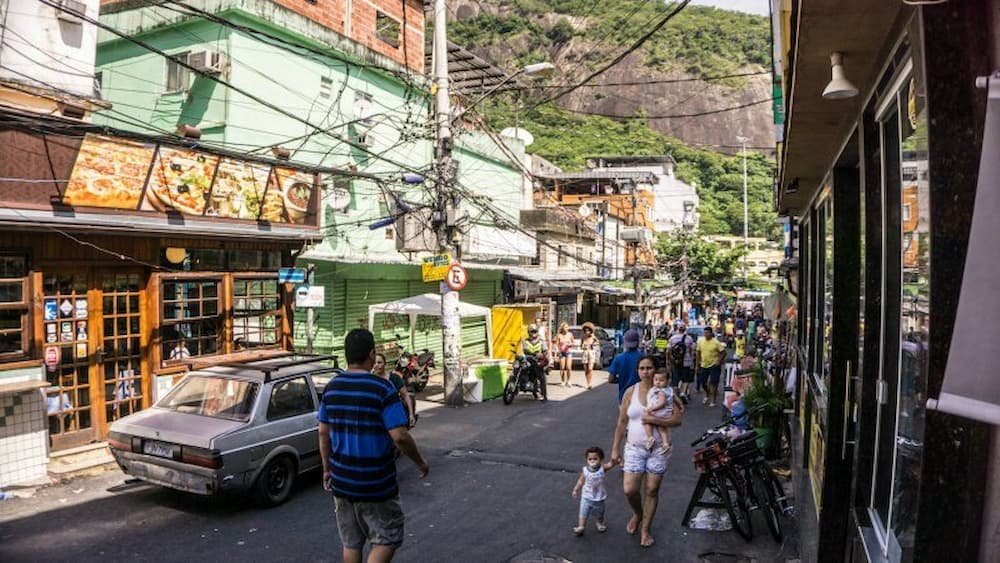
We walked a bit further towards the main road that led out of Rocinha to a massive sports center, an adjacent samba school and even saw a former F1 race track. My impression was that this favela was fairly established and probably had some middle-class residents – there was clearly sanitation, running water, and electricity that helped to support this community.
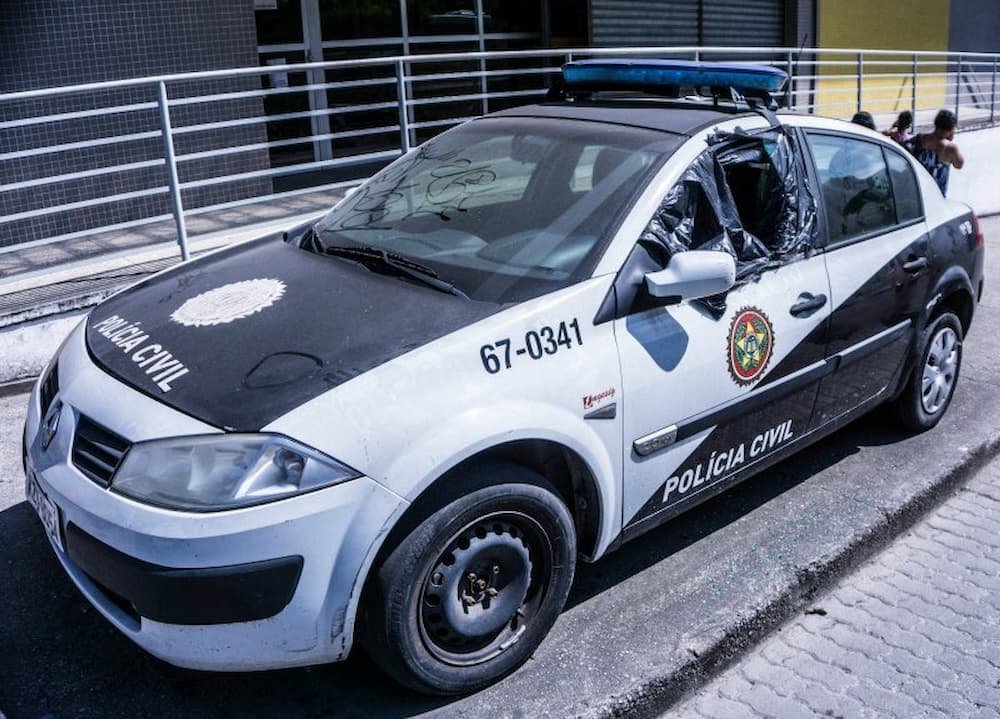
Our next stop was a smaller favela, Vila Canoas. As we visited the favela during the week of Carnaval, unfortunately, we weren’t able to visit the school and see the local kids (the cost of the favela tour helps to finance the community school), however, we did see the playground and a wall filled with colorful mosaics of butterflies and flowers outside – and a staircase stacked with positive words painted in blue.

Vila Canoas contrasted with the hustle and bustle of Rocinha – it was much smaller, with narrow paths that you could only access on foot. Rather than walking uphill as we did in Rocinha, we trekked down passageways to get further into Vila Canoas, with alleys splitting off in multiple turns. I felt like I was going down a rabbit hole. Again, however, the favela did show signs of vibrancy – we stood at the front door of a resident who had lovingly decorated a common walkway, with plants, lights, and color for people to appreciate as they passed by. At one point, my eyes followed a narrow stairway that led to an open door. Inside, I could make out a refrigerator and a young boy and his mother in the kitchen eating. In another house, I could see two girls hanging around outside on chairs and talking. These were scenes of home life that could be echoed anywhere else in the world.

Throughout the tour, Marcelo’s passion for educating people about the realities of favelas was palpable. He was engaging and while he emphasized his desire to get rid of the negative perceptions of favelas, he also talked about the ongoing political and corruption issues pervading the country that meant that for many, it’s difficult – if not impossible – to get out of the cycle of living a low-income life in a favela.
Yet these favelas highlight the social contrasts of the country. Certainly, there are favelas that would undoubtedly be off-limits to a tourist – they’d be more dangerous, less well-trodden, and you wouldn’t dare go there without a local. But there are also a lot of bright sparks within a favela – from the brilliant colors of the buildings, the smiles on the faces of the people, to the basic comforts in this city within a city.
All in all this was an insightful look into the social structure that exists in Brazil and definitely an experience I can recommend if you are visiting Rio de Janeiro. Be sure to book one of Marcelo’s tours through his website here.
